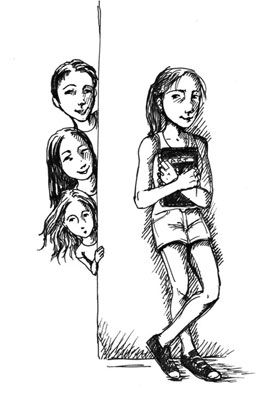All Nonfiction
- Bullying
- Books
- Academic
- Author Interviews
- Celebrity interviews
- College Articles
- College Essays
- Educator of the Year
- Heroes
- Interviews
- Memoir
- Personal Experience
- Sports
- Travel & Culture
All Opinions
- Bullying
- Current Events / Politics
- Discrimination
- Drugs / Alcohol / Smoking
- Entertainment / Celebrities
- Environment
- Love / Relationships
- Movies / Music / TV
- Pop Culture / Trends
- School / College
- Social Issues / Civics
- Spirituality / Religion
- Sports / Hobbies
All Hot Topics
- Bullying
- Community Service
- Environment
- Health
- Letters to the Editor
- Pride & Prejudice
- What Matters
- Back
Summer Guide
- Program Links
- Program Reviews
- Back
College Guide
- College Links
- College Reviews
- College Essays
- College Articles
- Back
Waging War on the Wage Gap MAG
Picture a woman and a man doing the same job, working the same number of hours at the same office, the only difference: their paycheck. This is not a hypothetical scenario: Women in 2016 still earn on average 79 cents to a man’s dollar. That 21 cents adds up to over $10,000 less in wages each year, on average. The wage gap is a form of sexism and inequality that has existed since women entered the workforce. It is taboo to talk about salary in our society, but this issue facing half of the population must be exposed and resolved. The wage gap impacts women’s career choices, college debt, retirement, and family life.
Paying off college loans is a burden that many face. A recent study by the American Association of University Women showed that 53 percent of women are paying more toward their student loans than they can afford, compared to only 39 percent of men. With college debt and daily expenses, the average woman is less likely to start an adequate nest egg for retirement. On average, women live up to three years longer than men, meaning they have to save even more for the future. Women are not earning as much in wages or pensions, leaving them with less to invest. Women over the age of 65 have a poverty rate of 11.6 percent compared to men’s 6.8 percent because they have less “financial cushion” to fall back on in a crisis, such as a medical issue or loss of a job.
When it comes to professions, traditional women’s work – nursing, teaching, and caregiving – has been undervalued for decades. These important roles in society have been considered less significant compared to male occupations involving science and math. When women do pursue jobs in male-dominated fields, they still experience a wage gap. Women in STEM fields would have to receive a master’s degree in a career where men only need a bachelor’s degree to receive equal pay. According to the U.S. Census, women historically have had fewer opportunities to achieve the highest earnings in their profession, despite equal levels of education with men. This has impacted entrepreneurship and new career ventures for women, confining them to the same traditionally female jobs.
When you picture a typical American family even a decade ago, you expected women to be stay-at-home moms while men were seen as the breadwinners. But the times are a-changing – compared to 29 percent of women, the rate of stay-at-home dads has steadily risen to 16 percent, according to the Pew Research Center. When men fulfill this role historically done by women, they are praised for their “enlightenment” or creating a “modern family dynamic.” But when women fill the role of primary breadwinner for the family, they are considered bad mothers. This hypocrisy leads many women to attempt to play both roles.
For decades, women have been expected to pay more while earning less. Menstrual supplies and toiletries such as razors or moisturizers branded “for women” are often marked up as “luxury items,” forcing women to pay more. This “Pink Tax” is a financial burden on families, especially those with single moms.
Women who have been affected by the wage gap through career choice, financial stability in families, or college debt and retirement are seeking a change. The answer may seem simple enough: provide equal pay for both men and women. But the government needs to start funding federal agencies that enforce fair pay. Workplaces need to provide family-friendly environments for men and women to fit the needs of all workers. These changes would improve the workplace dynamic and help women enter new fields and improve others with their greater social standing and newfound equality.

Similar Articles
JOIN THE DISCUSSION
This article has 0 comments.
I believe the wage gap is an important issue not only to women in the workforce now but also to students that will be finding a job and providing for themselves soon. This modern day muckraking article shows students how the wage gap affects women across the country and what can be done to fix it. I hope people see the obvious problem and are also seeking a solution.